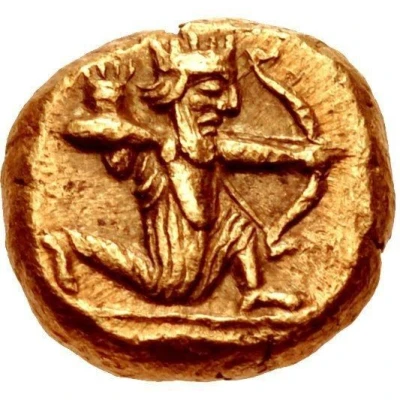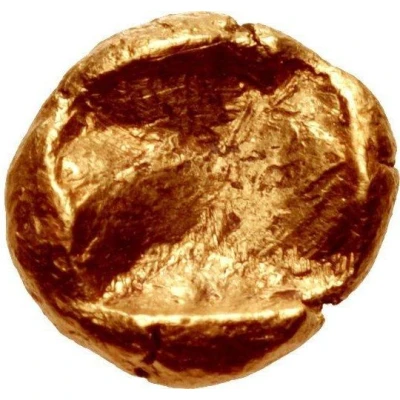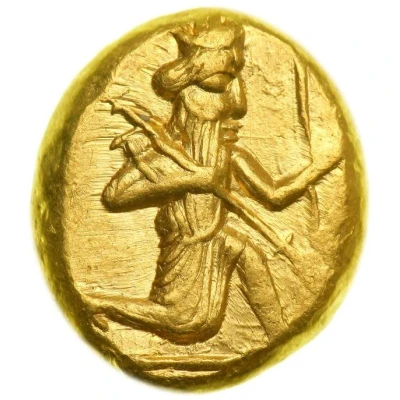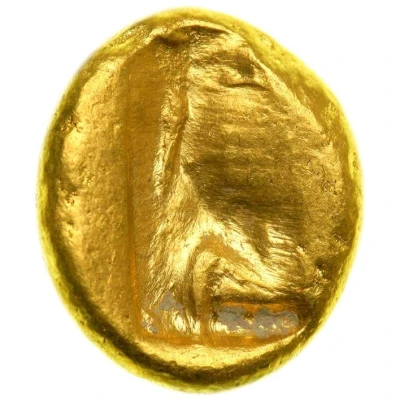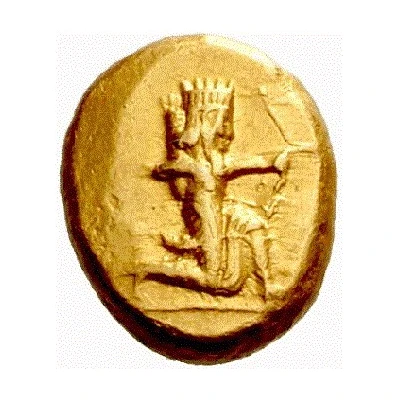
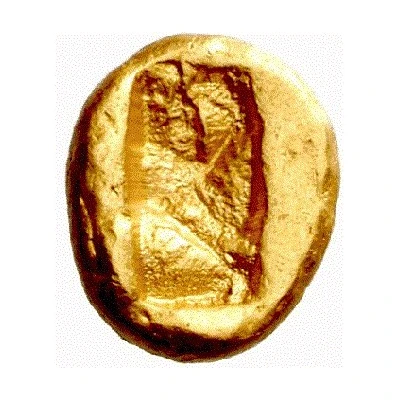

Daric - Darius I / Xerxes I THE ROYAL COINAGE - 2nd type 510 BC - 480 BC
| Gold (.958) | 8.32 g | 18 mm |
| Issuer | Achaemenid Empire (Achaemenid Empire (559 BC - 330 BC)) |
|---|---|
| King | Darius I the Great (522 BC - 486 BC) Xerxes I the Great (486 BC - 465 BC) |
| Type | Standard circulation coin |
| Years | 510 BC - 480 BC |
| Value | Daric (1) |
| Currency | Daric (521 BC-330 BC) |
| Composition | Gold (.958) |
| Weight | 8.32 g |
| Diameter | 18 mm |
| Shape | Round (irregular) |
| Orientation | Coin alignment ↑↓ |
| Demonetized | Yes |
| Updated | 2024-10-10 |
| Numista | N#69693 |
|---|---|
| Rarity index | 94% |
Reverse
Incuse punch.
Comment
The coinage of the Achaemenid Empire started to move away from simply copying Lydian coinage, to introducing changes with the reign of Darius I (ruled 522-486 BC). Under Darius I, the minting of Croeseids in Sardis was progressively replaced by the minting of Darics and Sigloi.From around 510-500 BC, Darius then simplified the coining procedure by replacing the double reverse punch of Lydian coins, by a single, oblong reverse punch, and he introduced the image of the Persian king in place of the lion and bull design. This is deduced from the fact that no Darics or Sigloi were found in the Apadana hoard, under the Apadana foundation stones of the Apadana Palace in Persepolis (dated to between 519 and 510 BC), whereas there were gold Croeseids of the light type and Greek silver staters. But by around 500 BC, a clay tablet, issued in year 22 of the reign of Darius I (circa 500 BC), contained the impression on clay of two Type II Sigloi ("King shooting arrow"), showing that the new Sigloi had already been issued by that date. Because of these and other discoveries, the creation of the Darics and Sigloi is dated to the last decade of the 6th century BC, during the reign of Darius I.
The new Achaemenid coins were initially only made in silver, while the Lydian gold design of the Croesus was maintained. Then, Darius introduced his new design for gold coins as well, which came to be known as Darics, from Old Persian Daruiyaka, meaning "Golden". Although the Achaemenids had developed their own currency, they still accepted local monetary production including civic issues, throughout the land under their control, in particular in Western Asia.
According to numismat Martin Price, there is no doubt that the Darics and Sigloi of Types I and II were minted at Sardis and immediately followed the production of the Croeseids, since they adopted similar weights and were of the same fabric. He insists that the finds of the Croeseids and the "Archer" types of Darics and Sigloi indicate that they were not an Imperial coinage, but rather the coinage of the Satrapy of Lydia.
Interesting fact
One interesting fact about the Daric coin is that it was used as a form of currency across a vast portion of the ancient world, including the Persian Empire, which spanned from modern-day Iran to Egypt, and parts of Europe and Asia. Its widespread use as a medium of exchange and store of value is a testament to the advanced economic and trade networks of the Achaemenid Empire.
